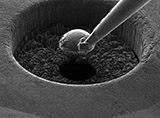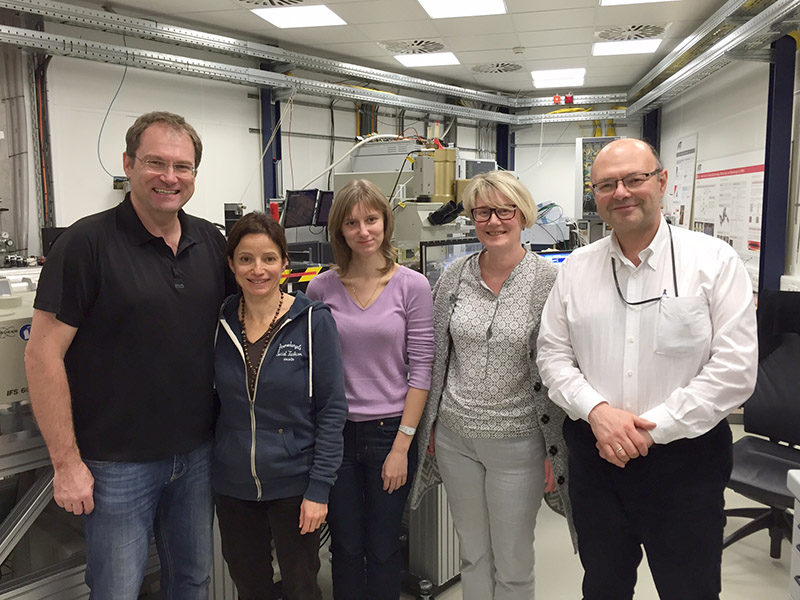At extreme pressures the properties of matter change dramatically, leading, for example, to the appearance of superconductivity (especially at unprecedented high temperatures), the solidification of hydrogen, or the transformation of carbon to diamond. In the field of high-pressure research, maximum achievable static pressures are limited by the strength of available materials used in the design of high-pressure confinement devices.
In the journal Science Advances a research team led by Prof. Natalia Dubrovinskaia from the University of Bayreuth reports on a breakthrough in high pressure research techniques with a new approach to generating static pressures of up to a Terapascal (1 TPa = 10 million atmospheres - this is three times the pressure at the centre of the Earth). Previously such pressures could be achieved only using dynamic techniques involving explosions and uncontrollable heating.
The researchers have developed novel diamond-anvil pressure cells based on a combination of conventional natural diamond and nanocrystalline diamond (NCD) in the form of 10-20 micrometer hemispheres which operate as secondary anvils. The NCD material is produced by high temperature and high pressure transformation of glassy-carbon, resulting in a transparent, ultra-high yield-strength material. With the novel double-stage diamond anvil cell (ds-DAC) samples can be now pressurized to previously unattainable pressures, allowing the observation of in situ the processes in the pressure chamber using synchrotron radiation and spectroscopic methods.
Ultra-high pressures under controlled laboratory conditions can be achieved only on a very small area. This poses a huge challenge to the design of in situ infrared spectroscopic measurements. They can be made possible only at cutting-edge brilliant infrared sources like ANKA. Infrared spectroscopic studies of the NCD material were carried out by Biliana Gasharova and Yves-Laurent Mathis together with the researchers from Bayreuth at the infrared beamline IR2 at the synchrotron radiation source ANKA at KIT (see picture). Due to the synchrotron’s brilliance advantage a sufficiently high measuring beam intensity is maintained through the small sample area.
The new results are of immense importance for solid state physics and chemistry, material sciences, geophysics, mineral physics and chemistry, planetary sciences and astrophysics.
The IBPT at KIT is presently constructing the test facility FLUTE, a compact linear accelerator which will generate extremely intense, ultra-short Terahertz and infrared pulses. Together with the existing possibilities at ANKA the IBPT research team expects that this will open up new avenues for further novel studies of matter under extreme conditions.
Further Reading
This research was published in Science Advances. A news article was also published by the University of Bayreuth.
Funding
The spectroscopic study was conducted in the frame of the "Verbundforschungsprojekt" 05K13WC3 of Prof. Natalia Dubrovinskaia, University Bayreuth (funded by BMBF).
Reference
N. Dubrovinskaia, L. Dubrovinsky, N.A. Solopova, A. Abakumov, S. Turner, M. Hanfland, E. Bykova, M. Bykov, C. Prescher, V.B. Prakapenka, S. Petitgirard, I. Chuvashova, B. Gasharova, Y.-L. Mathis, P. Ershov, I. Snigireva, A. Snigirev
Terapascal static pressure generation with ultrahigh yield strength nanodiamond
Science Advances 2 (7), e1600341 (2016), DOI: 10.1126/sciadv.1600341.


